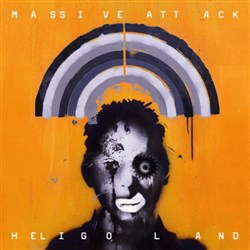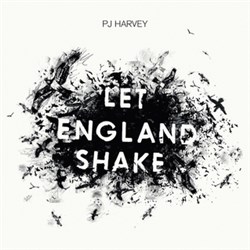
BY ALTUĞ KARAKURT (EE/III)
altug.karakurt@ug.bilkent.edu.tr
BY ALTUĞ KARAKURT (EE/III)
True Modern Classics
As I have mentioned in my previous columns, in my understanding of what constitutes a classic recording, replay value plays a significant role. Clearly many other factors such as creativity and cohesion are also of importance, but in general, replay value is the most restrictive aspect I’m looking at. In most cases, bands attempting to produce ambitious albums end up with very complicated ones that are very hard to digest, such as the entire discography of Dream Theater, or very calculated and over-thought ideas, such as those behind Marilyn Manson’s “Antichrist Superstar” concept album. In the end, whatever their particular flaws might be, it is usually very hard to come back to these albums, as they tend to lose their appeal after a few listens. Albums that manage to both make an artistic statement and stay relevant to their listeners even after a long time become the true classics. This week, I will introduce you to two of the greatest classics of the 2010s, which I think will still be relevant even decades from now.
Massive Attack – Heligoland
The legendary British trip-hop duo Massive Attack gave us their masterpiece “Heligoland” in 2010; this is still their most recent full-length release. In fact, the duo has released only five albums in their 28-year career. They don’t rush the creative process, and with each release they prove once again that when it is Massive Attack, it is definitely worth the wait.
With their unique sound—one of the most distinctive in the entire electronic music scene—the band is one of the true originators of the trip-hop genre. Despite the consistent high quality throughout their discography, I think “Heligoland” is the album where they found the unique, definitive Massive Attack sound they had been searching for. The album contains 10 diverse tracks, each of which could easily be the backbone of an entire album built on that particular sound. Each track captures another direction of trip-hop, with amazing productions and perfectly chosen guest vocals.
 The album starts off with “Pray for Rain,” a hazy yet clear piece, and with its tumbling drum track, the hour-long journey begins. The following song, “Babel,” flips the mood entirely, with very synthetic drum machines and smooth synth melodies combined with mesmerizing vocals. “Psyche” is another highlight of the album, with its minimalist style and singer-songwriter influences. Also memorable is “Girl I Love You,” which features a very noisy, layered and even psychedelic production, with Horace Andy’s distorted vocals. Later in the album, “Paradise Circus” stands out, with its thick bassline and dynamic rhythm structures, as does “Saturday Come Slow,” with intense vocals and a moody, elegant production. The lengthy closing track, “Atlas Air,” has a very modern structure and style of drumming, yet the tone of the production feels quite retro, making it a perfect ending for an album with such a strong personality.
The album starts off with “Pray for Rain,” a hazy yet clear piece, and with its tumbling drum track, the hour-long journey begins. The following song, “Babel,” flips the mood entirely, with very synthetic drum machines and smooth synth melodies combined with mesmerizing vocals. “Psyche” is another highlight of the album, with its minimalist style and singer-songwriter influences. Also memorable is “Girl I Love You,” which features a very noisy, layered and even psychedelic production, with Horace Andy’s distorted vocals. Later in the album, “Paradise Circus” stands out, with its thick bassline and dynamic rhythm structures, as does “Saturday Come Slow,” with intense vocals and a moody, elegant production. The lengthy closing track, “Atlas Air,” has a very modern structure and style of drumming, yet the tone of the production feels quite retro, making it a perfect ending for an album with such a strong personality.
Even the lengthy list above hardly scratches the surface of what this album provides. It manages to be a perfect fit both as a soundtrack for working and as the object of dedicated listens. Massive Attack achieves the feat of staying light and very accessible, while at the same time producing one of the most creative albums of our era. This is one of the very few albums that has something to offer any music fan, regardless of their background.
PJ Harvey – Let England Shake
PJ Harvey has been one of the most influential singer-songwriters since the 80s, and a pioneer in her own right. Unlike many successful artists, she isn’t credited with consistency or with developing a distinct personal sound. On the contrary, in every single release she goes for a direction she hasn’t discovered before and never repeats herself. This is why, even after three decades and ten releases, PJ still manages to surprise her fans and bring something completely new to the table.
I was first introduced to her through her 2011 release, “Let England Shake.” I was so impressed with this album that I dived into her discography right away. I actually remember spending a few months listening to her recordings and nothing else. PJ’s catalog is so diverse that you feel like you’re listening to a new artist each time you switch to a different album. Her earliest notable release was “Rid of Me,” with its raw sound and strong rock influences. The follow-up, “To Bring You My Love,” on the other hand, delivers much more intimate and emotional tracks with a much softer sound. A milestone in her career is “Stories From the City, Stories From the Sea,” which has the most mature sound in her discography, with an amazing production. In her next release, “White Chalk,” PJ completely abandons her previous sound and gives us an acoustic album with a very elegant sound.
each time you switch to a different album. Her earliest notable release was “Rid of Me,” with its raw sound and strong rock influences. The follow-up, “To Bring You My Love,” on the other hand, delivers much more intimate and emotional tracks with a much softer sound. A milestone in her career is “Stories From the City, Stories From the Sea,” which has the most mature sound in her discography, with an amazing production. In her next release, “White Chalk,” PJ completely abandons her previous sound and gives us an acoustic album with a very elegant sound.
“Let England Shake” was recorded in a church, which really gives the reverb and sense of volume evident throughout the record. With her great use of the autoharp and very creative keyboard and guitar phrases, PJ here delivers some of the most complex compositions in her catalog, while still conserving the raw feeling of the recordings by means of clapping and humming in some of the tracks. She sings in a slightly deeper voice than in her earlier albums, and the level of the vocal performance reflects her amazing talent. The socially aware lyrics criticize British and American politics and their war crimes, through numerous references and similes. With the repetitive style of the lyrics and the memorable punchlines, PJ gets her message to stick in the listener’s head. This album is very satisfying both as a catchy, enjoyable soundtrack and as a great masterpiece comparable with some of the most creative and dense albums of its genre.
